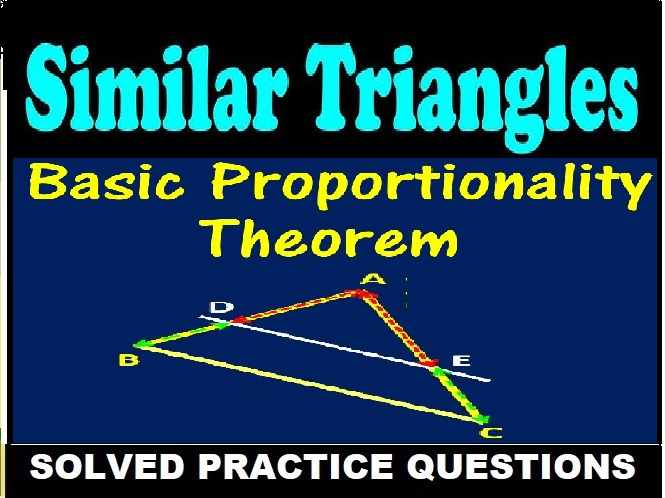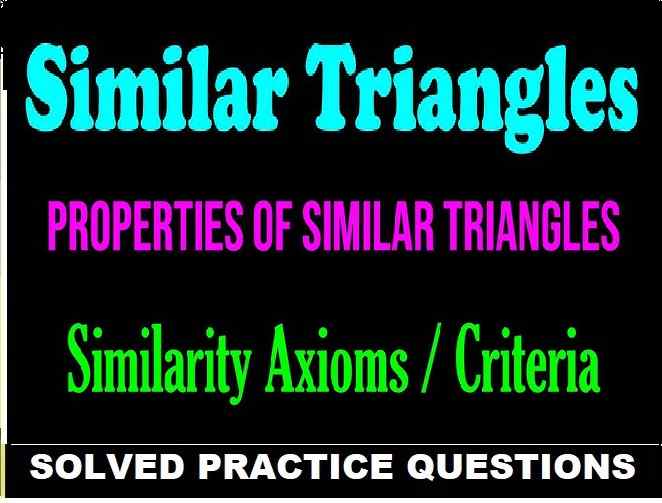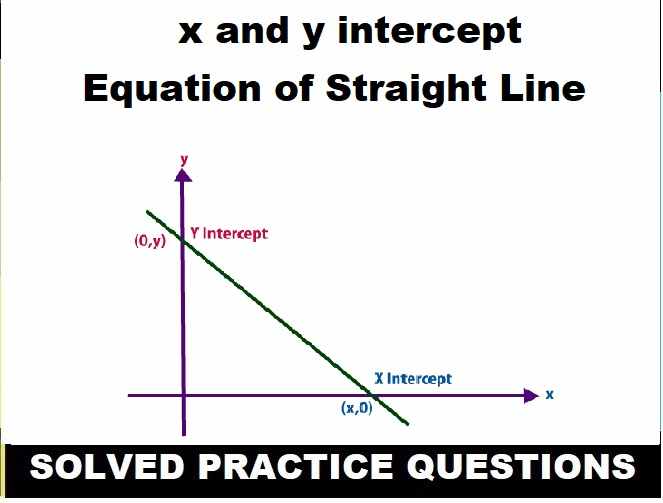MCQ Type Question Principles of Inheritance and Variation for ISC Class 12 Biology
| Board | ISC |
| Class | 12th (XII) |
| Subject | Biology |
| Chapter Name |
Principles of Inheritance and Variation |
| Syllabus | on bifurcated syllabus (after reduction) |
| bifurcated pattern |
Semester-1 |
| Session | 2021-22 |
| Topic | MCQ / Objective Type Question |
ISC Class-12 Biology MCQ Principles of Inheritance and Variation
Question 1 : Person having genotype IA IB would show the blood group as AB. This is because of
(a) pleiotropy
(b) co-dominance
(c) segregation
(d) incomplete dominance.
Answer: (b) co-dominance
Question 2 : A cross between two tall plants resulted in offspring having few dwarf plants. What would be the genotypes of both the parents ?
(a) TT and Tt
(b) Tt and Tt
(c) TT and TT
(d) Tt and It
Answer: (b) Tt and Tt
Question 3 : The test cross is used to determine the
(a) genotype of the plant
(b) phenotype of the plant
(c) both (a) and (b)
(d) None of the above
Answer : (a) genotype of the plant
Question 4 : If a genetic disease is transferred from a phenotypically normal but carrier female to only some of the male progeny, the disease is
(a) autosomal dominant
(b) autosomal recessive
(c) sex-linked dominant
(d) sex-linked recessive.
Answer: (d) sex-linked recessive.
Question 5 : The crossing of F1 to homozygous recessive parent is called
(a) back cross
(b) test cross
(c) F1 cross
(d) all of these
Answer : (b) test cross
Question 6 : In a cross between a male and female, both heterozygous for sickle cell anaemia gene, what percentage of the progeny will be diseased?
(a) 25%
(b) 100%
(c) 50%
(d) 75%
Answer : (b) 100%
Question 7 : Which of the following will not result in variations among siblings ?
(a) Independent assortment of genes
(b) Crossing over
(c) Linkage
(d) Mutation
Answer: (c) Linkage
Question 8 : Mendel’s Law of independent assortment holds good for genes situated on the
(a) non-homologous chromosomes
(b) homologous chromosomes
(c) extra nuclear genetic element
(d) same chromosome.
Answer: (b) homologous chromosomes
Question 9 : In humans, the dominance relationship between the A and B alleles of the ABO blood group gene is an example of
(a) complete dominance
(b) incomplete dominance
(c) codominance
(d) epistasis
Answer: (c) codominance
Question 10 : The production of gametes by the parents, formation of zygotes, the F1 and F2 plants, can be understood from a diagram called:
(a) Punnett square
(b) Net square
(c) Bullet square
(d) Punch square
Answer: (a) Punnett square
Question 11: Experimental verification of the chromosomal theory of inheritance was done by:
(a) Sutton
(b) Boveri
(c) Morgan
(d) Mendel
Answer: (c) Morgan
Question 12: The colour based contrasting traits in seven contrasting pairs, studied by Mendel in pea plant were
(a) 1
(b) 2
(c) 3
(d) 4
Answer: (c) 3
Question 13. _________ pairs of contrasting traits were studied by Mendel in pea plant.
(a) 6
(b) 7
(c) 8
(d) 10
Answer: (b) 7
Question 14. Which of the following characters was not chosen by Mendel ?
(a) Pod shape
(b) Pod colour
(c) Location of flower
(d) Location of pod
Answer: (d) Location of pod
Question 15: Genes which code for a pair of contrasting traits are known as
(a) dominant genes
(b) alleles
(c) linked genes
(d) none of these
Answer: (b) alleles
Question 16: The distance between the genes is measured by
(a) angstrom
(b) map unit
(c) Dobson unit
(d) millimetre
Answer : (b) map unit
Question 17: Linkage reduces the frequency of
(a) hybrids.
(b) all parental types.
(c) homozygous recessive parents.
(d) heterozygous recessive parents.
Answer: (a) hybrids.
Question 18: Select the correct match
(a) Phenylketonuria – Autosomal dominant trait
(b) Sickle cell anemia – Autosomal recessive trait chromosome – 11
(c) Thalassemia – X linked
(d) Haemophilia – Y linked
Answer: (b) Sickle cell anemia – Autosomal recessive trait chromosome – 11
Question 19: A recessive allele is expressed in
(a) heterozygous condition only
(b) homozygous condition only
(c) F3 generation
(d) both homozygous and heterozygous conditions.
Answer: (b) homozygous condition only
Question 20: Name the scientist who discovered the laws of Heredity.
(a) Gregor Mendel
(b) Newton
(c) Punnett
(d) None of the above
Answer: (a) Gregor Mendel
Question 21: Who introduced chromosomal theory of inheritance?
(a) Mendel
(b) Sutton
(c) Reginald
(d) Boyen
Answer: (b) Sutton
Question 22: Success of mendal is
(a) Selection of Pea plant
(b) Studied of free characters
(c) More Characters selection
(d) Pea is Bisexual
Answer: (a) Selection of Pea plant
Question 23: The characters which appear in the first filial generation are called
(a) recessive characters
(b) dominant characters
(c) holandric characters
(d) lethal characters
Answer: (b) dominant characters
Question 24: What will be the distribution of phenotypic features in the first filial generation after a cross between a homozygous female and a heterozygous male for a single locus ?
(a) 3 : 1
(b) 1 : 2 : 1
(c) 1 : 1
(d) None of these
Answer: (c) 1 : 1
Question 25: Distance between the genes and percentage of recombination shows
(a) a direct relationship
(b) an inverse relationship
(c) a parallel relationship
(d) no relationship
Answer : (a) a direct relationship
Question 26: HbA and HbS alleles of normal and sickle celled RBC are
(a) dominant-recessive alleles.
(b) polygenic alleles.
(c) codominant alleles.
(d) multiple alleles.
Answer: (c) codominant alleles.
Question 27: How many true-breeding pea plant varieties did Mendel select as pairs, which were similar except in one character with contrasting traits?
(a) 2
(b) 14
(c) 6
(d) 4
Answer: (b) 14
Question 28: The plant Mendel used to study inheritance of two genes is
(a) Apple
(b) Mango
(c) Garden pea
(d) Potato
Answer: (c) Garden pea
Question 29: Mendel published his work on inheritance of characters in
(a) 1870
(b) 1900
(c) 1865
(d) 1845
Answer: (c) 1865
Question 30: A couple has six daughters. What is the possibility of their having a girl next time ?
(a) 10 %
(b) 50 %
(c) 90 %
(d) 100 %
Answer: (b) 50 %
Question 31: Number of autosomes present in liver cells of a human female is
(a) 22 autosomes
(b) 22 pairs
(c) 23 autosomes
(d) 23 pairs
Answer: (b) 22 pairs
Question 32: Haplodiploidy is found in
(a) grasshoppers and cockroaches
(b) birds and reptiles
(c) butterflies and moths
(d) honeybees, ants and wasp.
Answer: (d) honeybees, ants and wasp.
Question 33: Sex is determined in human beings
(a) by ovum.
(b) at time of fertilization.
(c) 40 days after fertilization.
(d) seventh to eight week when genitals differentiate in foetus.
Answer: (b) at time of fertilization.
Question 34: Female heterogametic is
(a) two different types of gametes are produced by females.
(b) four different types of gametes are produced – by males.
(c) Can be both (a) and (b)
(d) None of the above
Answer: (a) two different types of gametes are produced by females.
Question 35: Haemophilia is a
(a) Mendalian disorder
(b) Chromosomal disorder
(c) Can be (a) or (b)
(d) None of the above
Answer: (a) Mendalian disorder
Question 36: Mendal formulated the law of purity of gametes on the basis of
(a) monohybrid cross
(b) dihybrid cross
(c) test cross
(d) back cross.
Answer: (a) monohybrid cross
Question 37: The inheritance of flower colour in Antirrhinum (dog flower) is an example of
(a) incomplete dominance
(b) co-dominance
(c) multiple alleles
(d) linkage.
Answer: (a) incomplete dominance
Question 38: ABO blood grouping in human beings cites the example of
(a) incomplete dominance
(b) co-dominance
(c) multiple allelism
(d) both
(b) and (c)
Answer: (b) and (c)
Question 39: In mice, Y is the dominant allele for yellow fur an y is the recessive allele for grey fur. Since Y is lethal when homozygous, the result of cross Yy × Yy will be
(a) 3 yellow : 1 grey
(b) 2 yellow : 1 grey
(c) 1 yellow : 1 grey
(d) 1 yellow : 2 grey
Answer: (b) 2 yellow : 1 grey
Question 40: The ‘X’ body of Henking was observed in
(a) all sperms during spermatogenesis.
(b) all eggs during oogenesis.
(c) half of the sperms during spermatogenesis.
(d) half of the eggs during oogenesis.
Answer: (c) half of the sperms during spermatogenesis.
Question 41: Down’s syndrome is a
(a) Mendelian disorder
(b) Chromosomal disorder
(c) Can be (a) or (b)
(d) None of the above
Answer: (b) Chromosomal disorder
Question 42: An analysis of traits in several generation of a family is called the
(a) Pedigree analysis
(b) Mendel analysis
(c) Punneet analysis
(d) None of the above
Answer: (a) Pedigree analysis
Question 43: How many types of gametes can be produced by a diploid organism who is heterozygous for 4 loci ?
(a) 4
(b) 8
(c) 16
(d) 32
Answer: (c) 16
Question 44: Which of the following is correct for the condition when plant YyRr is back crossed with the double recessive parent ?
(a) 9 : 3 : 3 : 1 ratio of phenotypes only
(b) 9 : 3 : 3 : 1 ratio of genotypes only
(c) 1 : 1 : 1 : 1 ratio of phenotypes only
(d) 1 : 1 : 1 : 1 ratio of phenotypes and genotypes
Answer: (d) 1 : 1 : 1 : 1 ratio of phenotypes and genotypes
Question 45: Law of independent assortment can be explained with the help of
(a) dihybrid
(b) test cross
(c) back cross
(d) monohybrid cross
Answer: (a) dihybrid
Question 46: The number of contrasting characters studied by Mendel for his experiments was :
(a) 14
(b) 4
(c) 2
(d) 7
Answer: (d) 7
Question 47: Failure of segregation of chomatids during cell division cycle results in the gain or loss of a chromosome(s) is called
(a) Female heterogamety
(b) Male heterogamety
(c) Aneuploidy
(d) None of the above
Answer: (c) Aneuploidy
Question 48: Mendel’s work was rediscovered by three scientists in the year
(a) 1865
(b) 1900
(c) 1910
(d) 1920
Answer: (b) 1900
Question 49: Which three scientists independently rediscovered Mendel’s work ?
(a) Avery, McLeod, McCarty
(b) Sutton, Morgan and Bridges
(c) Bateson, Punnet and Bridges
(d) de Vries, Correns and Tschemark
Answer: (d) de Vries, Correns and Tschemark
Question 50: Experimental verification of ‘chromosomal theory of inheritance’ was done by
(a) Sutton and Boveri
(b) Morgan et al
(c) Henking
(d) Karl Correns.
Answer: (b) Morgan et al
Question 51 : Genes located very close to one another on same chromosome tend to be transmitted together and are called as
(a) allelomorphs
(b) identical genes
(c) linked genes
(d) recessive genes
Answer: (c) linked genes
Question 52: Punnett square was developed by
(a) Mendel
(b) Watson and Sútton
(c) Reginald
(d) Correns
Answer: (c) Reginald
Question 53: Two genes very close on a chromosome will show:
(a) No crossing over
(b) High crossing over
(c) Hardly an crossing over
(d) Only double crossing overy
Answer: (a) No crossing over
Question 54: An lndividual with into identical alleles is:
(a) Hybrid
(b) Dominant
(c) Homozygous
(d) Heterozygous
Answer: (c) Homozygous
Question 55: If linkage was known at the time of Mendel then which of the following laws, he would not have been able to explain ?
(a) Law of dominance
(b) Law of independent assortment
(c) Law of segregation
(d) Law of purity of gametes
Answer: (b) Law of independent assortment
-: End of MCQ Principles of Inheritance and Variation for ISC Class 12 Biology :-
-: also visit :-
- ISC Class-12 Text book Solutions, Notes , Syllabus, Paper
- MCQ Type Questions ISC Class-12 Semester-1 Session 2021-22
Please share with your ISC friends if it is helpful
Thanks


